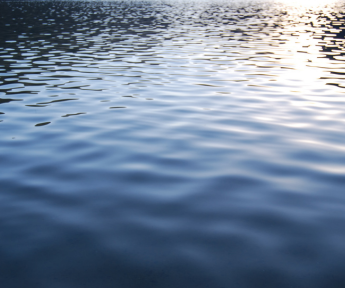Abstract
Microplastics degrade slowly over time, leaching carbon (C) that could be subsequently incorporated into aquatic food webs. Current estimates of microplastic degradation vary, and little is known about microplastic-derived C fate under natural environmental conditions. To investigate whether microplastics leach C that is subsequently incorporated into aquatic food webs, we added isotopically enriched microplastics to Lake 378 at the Experimental Lakes Area in Ontario, Canada. In an ∼1100 L limnocorral (in situ open-bottom enclosure), we added 99% 13C-labelled polystyrene (8–216 µm in longest dimension) at a nominal concentration of 3268 particles/L. A second limnocorral without microplastics served as a negative control. Monthly measurements of δ13C-DIC and δ13C-DOC in filtered water revealed no detectable leaching of 13C from the plastic. Compound-specific isotope analysis of δ13C in amino acids of bulk plankton and periphyton revealed a slight (0.5‰) enrichment in 13C, within the range of natural variability for these organisms. Under the natural conditions of temperate oligotrophic lakes, degradation of microplastics is likely a very slow process that was not possible to detect in this 4-month experiment. Future studies should focus on assessing degradation of microplastics under realistic field scenarios to improve estimates of degradation pathways and associated time scales.
Introduction
There is growing concern about the fate and effects of microplastics (plastics < 5 mm in size) in aquatic ecosystems due to their abundance and persistence in the environment, and their potential toxic effects on aquatic organisms (Horton et al. 2017; Wang et al. 2019; Bucci et al. 2020). Plastic polymers are synthesized primarily from fossil fuels like petroleum or natural gases, and thus are carbon (C)-based products. Due to the large amount of plastic entering aquatic ecosystems, plastic-derived C could be considered a significant C pool in the environment (Dees et al. 2021).
Slowly, macroplastics are fragmented through abiotic degradation (i.e., photo- and mechanical degradation) in surface water, leading to the generation of microplastics, which are more susceptible to further biodegradation by microbes (Chamas et al. 2020; Zhu et al. 2020; Dees et al. 2021; Priya et al. 2022). During these processes, degradation of microplastics can result in the release (termed “leaching”) of small dissolved organic carbon (DOC) compounds from microplastics into water. Further, microbial utilization of microplastics can lead to mineralization to CO2 and CH4 (Curran and Strlič 2015; Zhu et al. 2020; Lee et al. 2021; Priya et al. 2022). In addition to the fragmentation and mineralization of macro and microplastics in the environment, microplastics can foster microbial growth more than natural DOC, suggesting that microplastics could increase microbial activity and enhance the mineralization of microplastics in the environment (Sheridan et al. 2022).
Previously, compound-specific isotope analysis (CSIA) revealed that in laboratory experiments, microbial degradation of microplastics resulted in mineralization to respired CO2 and incorporation of plastic C in cell membrane components of microbes (Taipale et al. 2019, 2023). Further, this plastic-derived C was then trophically transferred and utilized by algae and zooplankton (Taipale et al. 2019, 2023). These studies suggest that MP-derived C can be effectively used by mixotrophic algae in the formation of biomolecules. However, the degradation and subsequent incorporation of plastic-derived C into aquatic food webs has not been studied in the natural environment and a better understanding of these processes under such conditions is needed (Sander et al. 2019).
The objective of this experiment was to measure the leaching of C from microplastics over time in a boreal lake ecosystem and determine if we could detect the leached C within the aquatic food web. We employed isotopically labelled 13C-polystyrene (13C-PS) as a novel approach to trace MP-derived C in an aquatic food web (Liu et al. 2024). We added 13C-PS to a 1100 L limnocorral (in-lake enclosure, open to sediment and enclosing natural water and biota of the lake environment). Potential plastic leaching and incorporation into the food web was measured over time using stable isotope analysis of δ13C-DIC (dissolved inorganic carbon), δ13C-DOC, and δ13C in amino acids (δ13CAA) of periphyton and plankton. We hypothesized that (1) microplastics in a lake lose C over time due to both abiotic (photo-oxidative) and biotic (microbial) degradation, and (2) that DOC and DIC derived from microplastics is bioavailable and incorporated into the food web through utilization by microbes. From these hypotheses, we predicted that (1) DIC and DOC would be 13C-enriched (relative to a control; measured as δ13C-DIC and δ13C-DOC) following addition of 13C labelled microplastics, and (2) amino acids in plankton and periphyton would be 13C-enriched (relative to a control; measured as δ13C in amino acids) following addition of 13C labelled microplastics.


